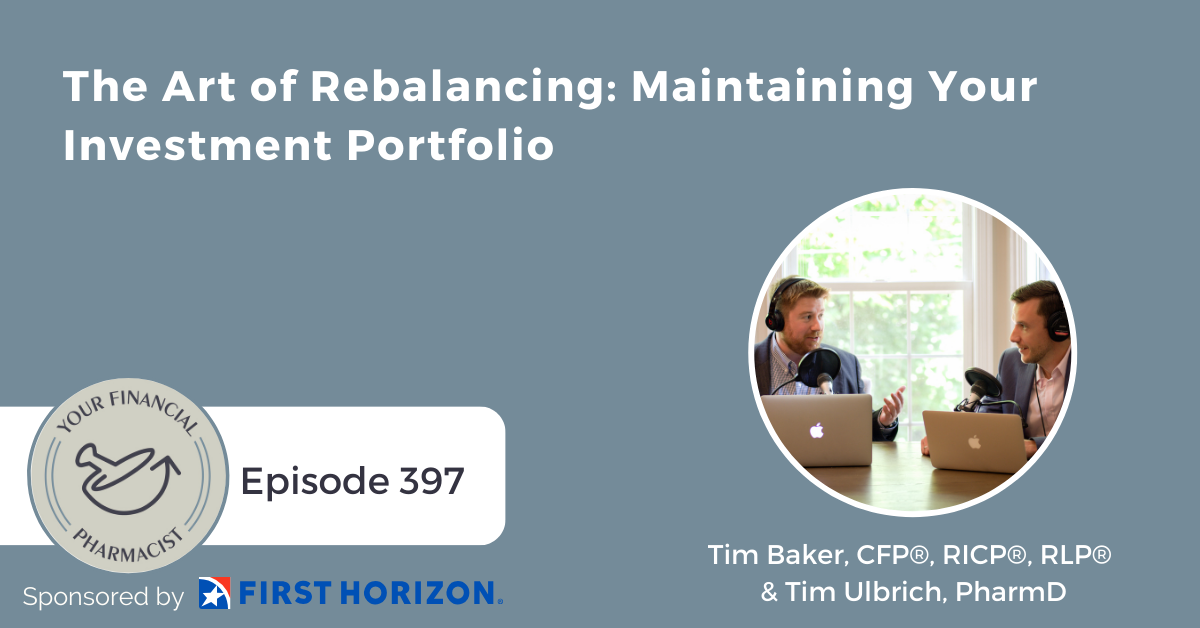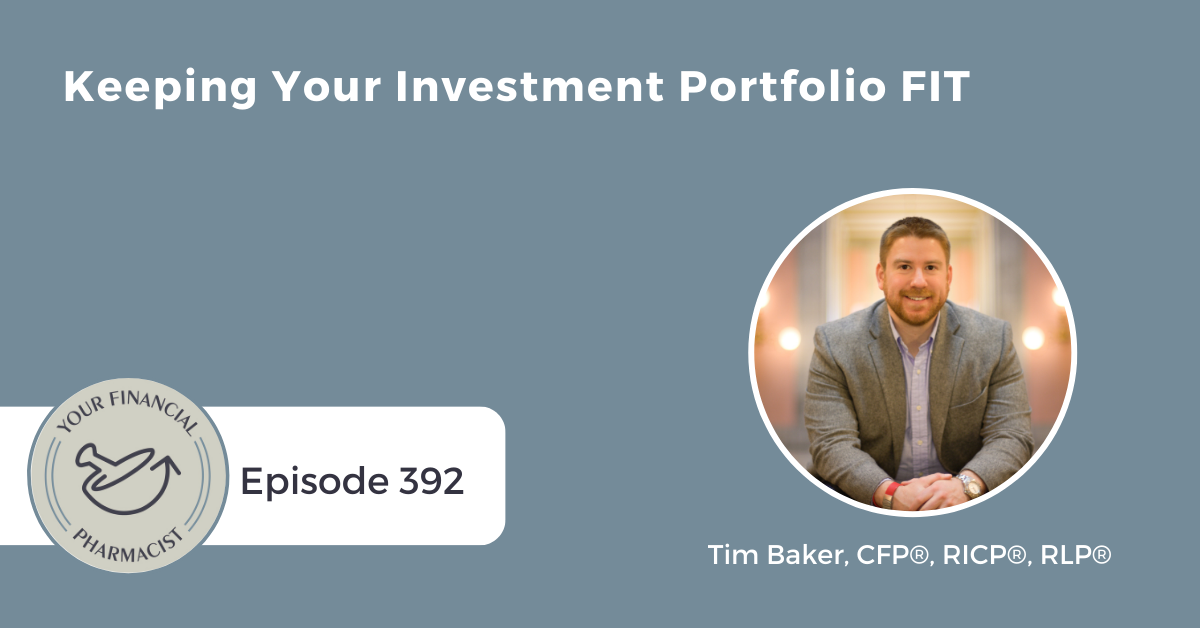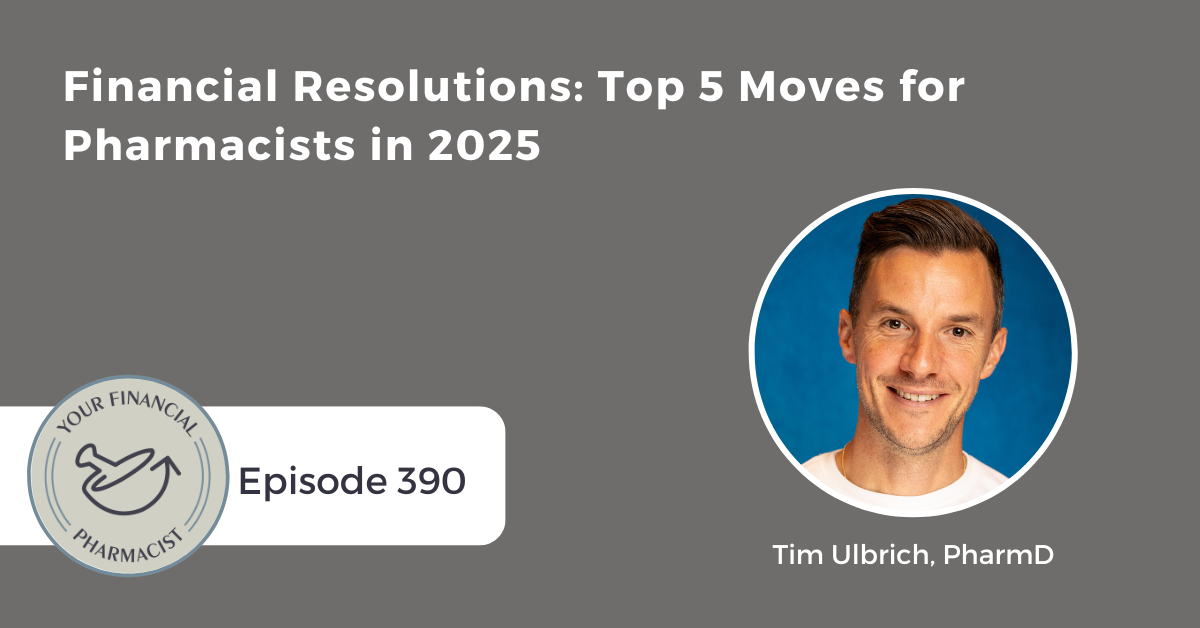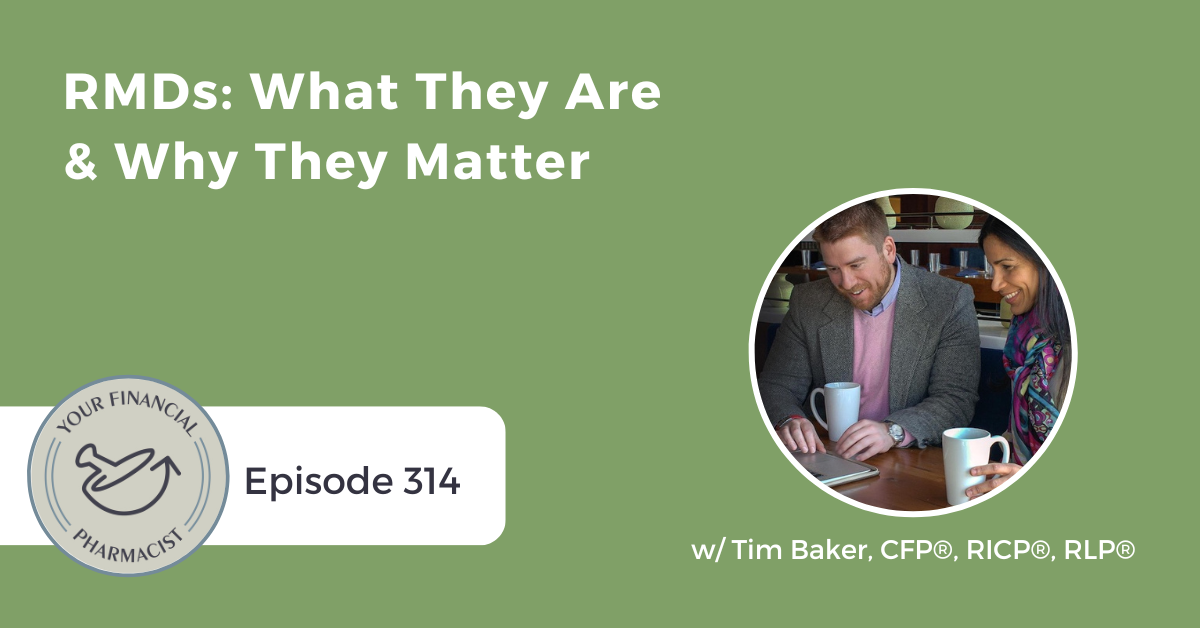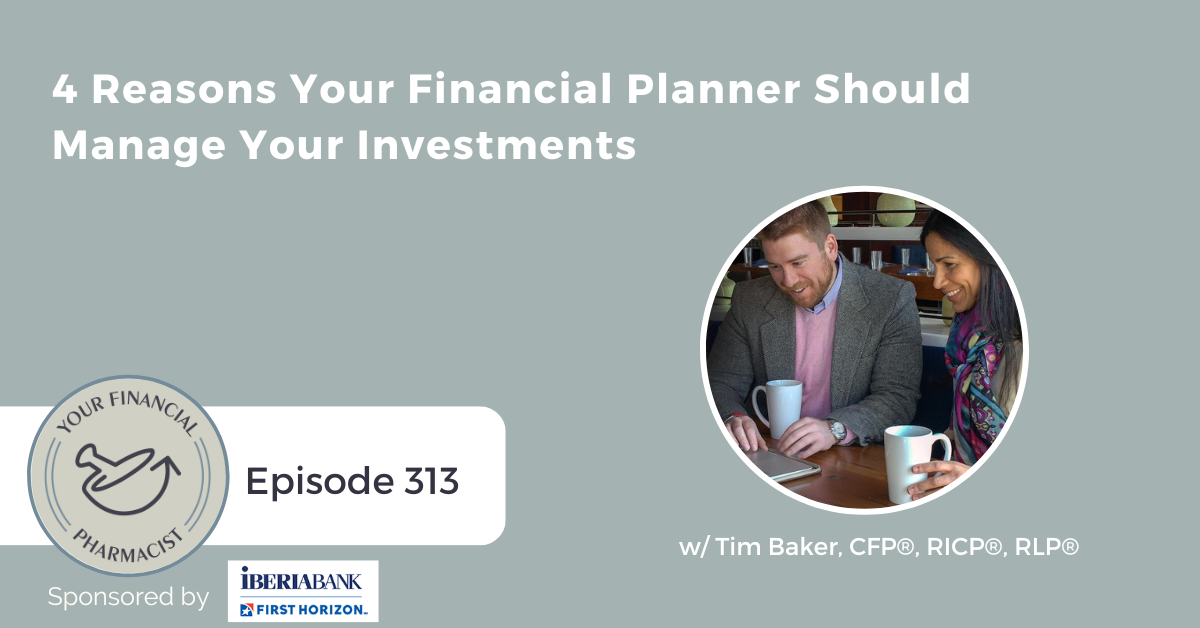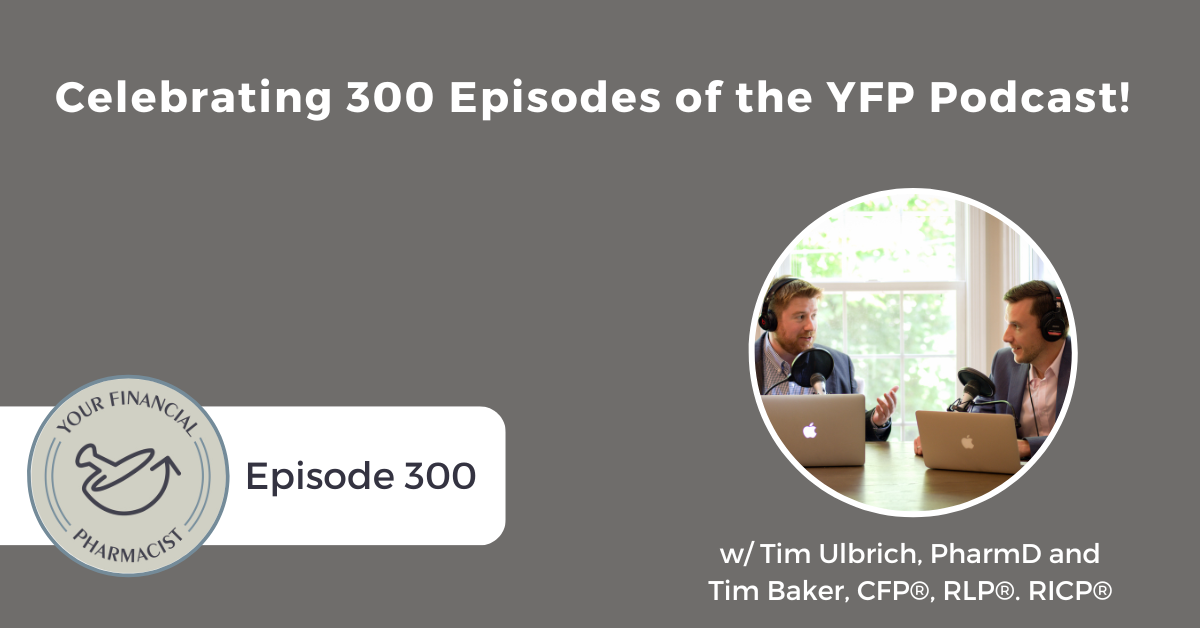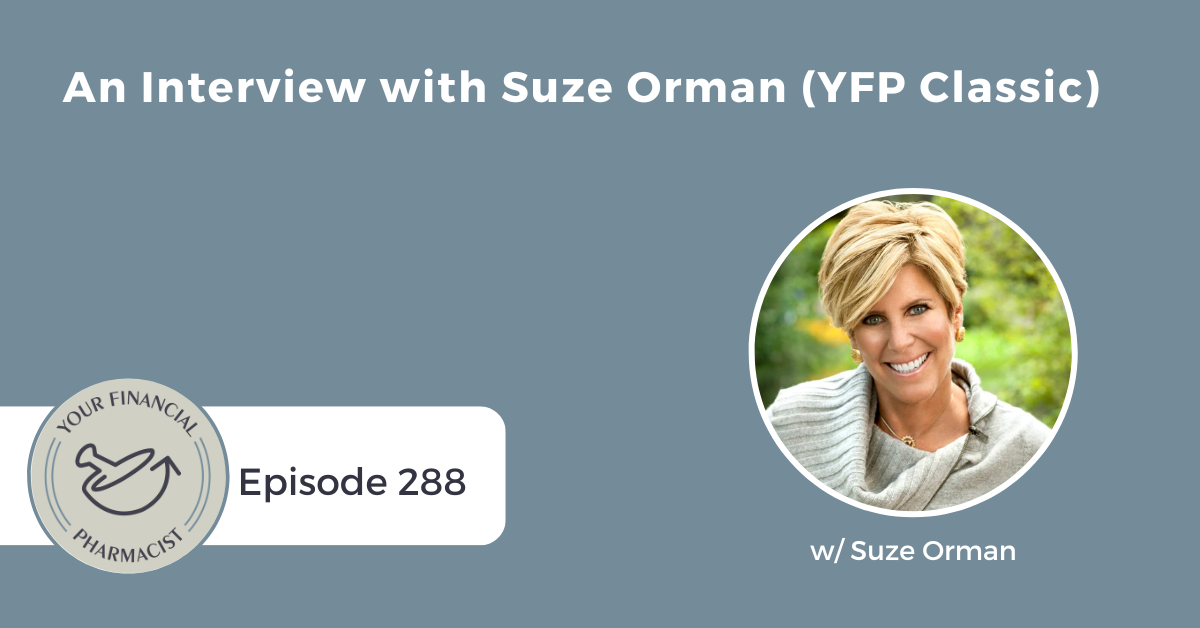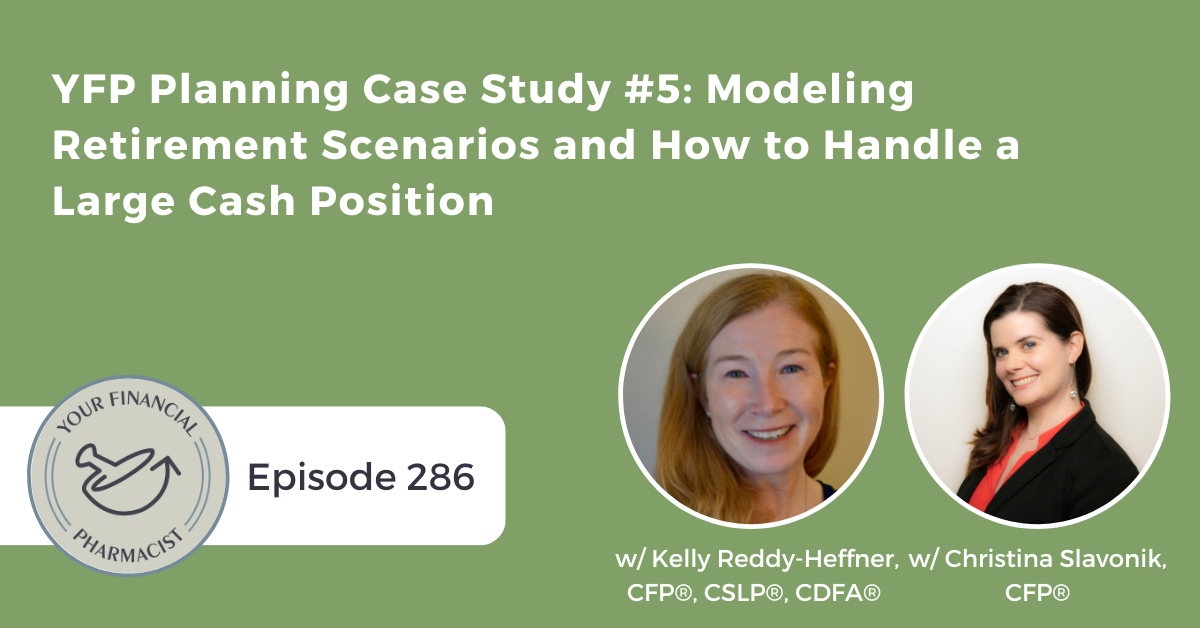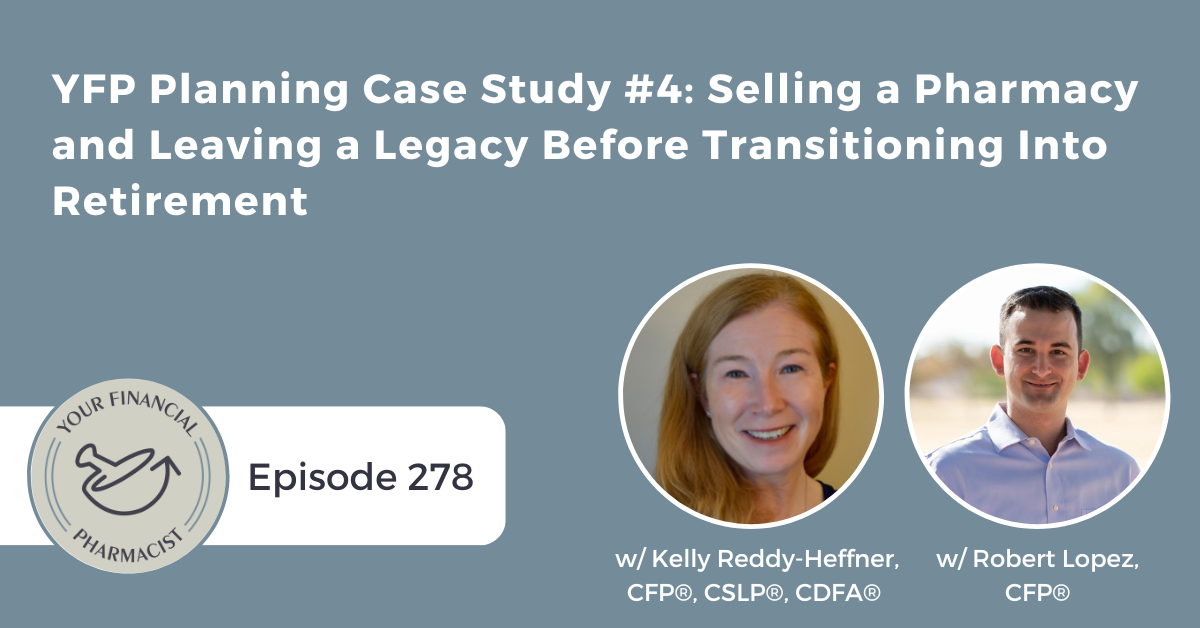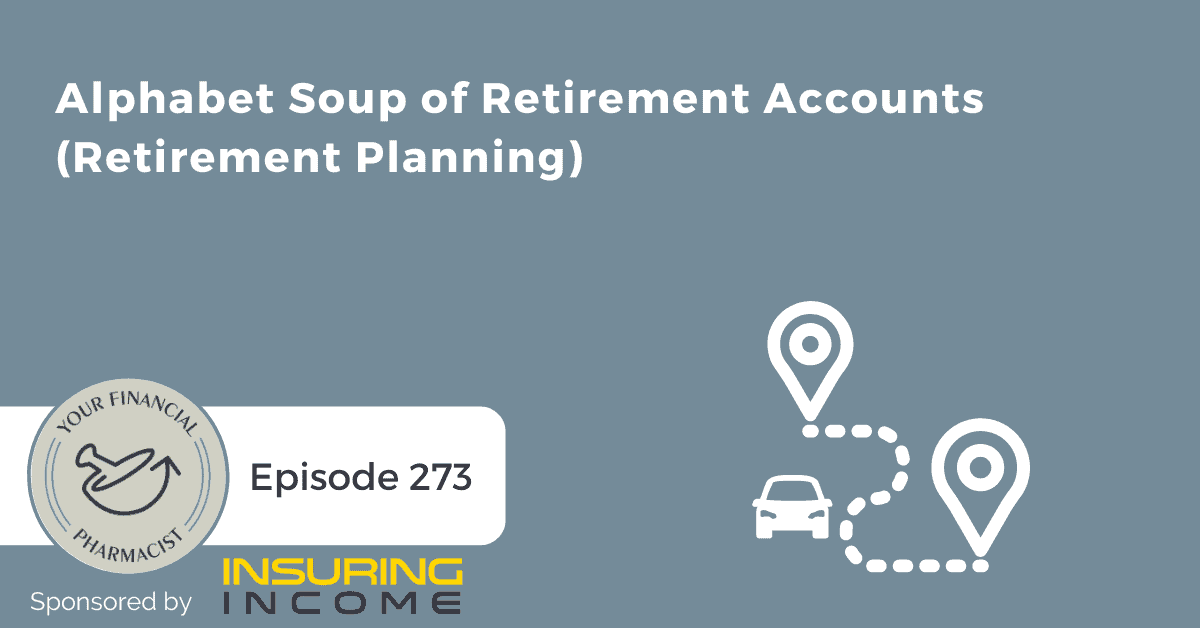Tim Baker, CFP®, RICP®, RLP® and Tim Ulbrich, PharmD discuss the importance of maintaining a balanced asset allocation, the nuances of risk tolerance and capacity, and the different accounts you should be rebalancing.
Brought to you by First Horizon.
Episode Summary
In this episode, Tim Baker, CFP®, RICP®, RLP®, and Tim Ulbrich, PharmD, explore the essentials of rebalancing your investment portfolio.
Tim and Tim discuss asset allocation, risk tolerance, and key accounts to rebalance. They also highlight common mistakes and effective rebalancing strategies for long-term investment success.
Key Points from the Episode
- [00:16] Introduction to Rebalancing Your Investment Portfolio
- [01:34] Defining Asset Allocation and Rebalancing
- [02:43] The Importance of Rebalancing
- [04:37] Accounts to Consider for Rebalancing
- [09:23] Risk Tolerance vs. Risk Capacity
- [17:44] Common Mistakes in Rebalancing
- [22:43] Timing Your Rebalancing
- [25:38] Conclusion and Financial Planning Services
Episode Highlights
“ What we’re really talking about here is like maintaining the amount of risk that you feel comfortable with.” – Tim Baker [1:04]
“ Rebalancing is the process of realigning the asset allocation of your investments to maintain whatever your desired level of risk is.” – Tim Baker [2:30]
“ But the question behind that is like, Where are we going with these investment accounts? What’s the overarching goal? What’s the target amount that we’re trying to achieve?” – Tim Ulbrich [7:06]
“ The longer time horizon that you have, the more capacity that you have to take risk because the more likely that that portfolio can recover over those 30 years.” – Tim Baker [11:06]
“ Risk tolerance is what you want to take. That’s kind of your emotional response. The risk capacity is what you should or need to take.” – Tim Baker [11:54]
Links Mentioned in Today’s Episode
- First Horizon
- YFP YouTube Channel
- YFP Book a Discovery Call
- YFP Disclaimer
- Subscribe to the YFP Newsletter
- Tim Ulbrich on LinkedIn
- Tim Baker on LinkedIn
- YFP on Instagram
- YFP Facebook Group
Episode Transcript
Tim Ulbrich: Tim Baker, glad to have you back on the show.
Tim Baker: Good to be back with what’s new, Tim.
Tim Ulbrich: I think this is back to back, right? It’s been a while, uh, since we’ve done a back to back. So last week we talked about couples working together with their finances, certainly a relevant and important topic. And today we’re going to go pretty narrow and pretty nerdy.
Uh, as we talk about rebalancing your investment portfolio and Tim, let me start with that. We talk a lot [00:03:00] about. our savings rate and how much we’re going to save and how much we need to save for retirement. And sometimes what we lose in that conversation, certainly not with clients when our team’s doing this one on one, but maybe in a broader education sense is how we actually allocate those assets.
Where, where do those dollars go? And then what do we do when that asset allocation perhaps get it out of whack over time, which is our topic, uh, with rebalancing. So I think, I think naturally there can be a focus on the accumulation, but we might lose some of those details along the way.
Tim Baker: Yeah. I mean, it’s an important thing to consider because what we’re really talking about here is like maintaining the amount of risk that you feel comfortable with, with, and for a lot of people are like, I don’t even know what you’re talking about. So I’m just putting in a target date fund. Um, so if you’re in a target date fund, Um, you know, primarily this episode won’t apply to you, but if you’re kind of pulling the strings and want a little bit more precision, um, want to pay a little bit less, that’s one of the, the, the, the beast that I have with target a fund, this’ll [00:04:00] be an episode to kind of tune in and, and, and listen to in terms of, you know, at least how we approach it.
Tim Ulbrich: So let’s start with just defining rebalancing and maybe at the same time, define asset allocation, because those are going to go hand in hand.
Tim Baker: Yeah, so asset allocation is really just the percentages between stocks and bonds, um, at a high level. Um, so. Um, you know, if you’re, if you’re in, say, an 80 20, um, portfolio, that means 80 percent is in stock. So you think traditionally more exponential growth, um, you know, more, more stocks and an accumulation phase.
And then bonds are, I, we typically explain as more like linear growth, which is where you’re, you know, it’s fixed income, you’re, you’re being set, you know, being paid, um, you know, interest and those types of things. So typically the higher the bonds, the more risk. Um, avoidant you are. Um, and typically this is for people that are approaching retirement or in retirement.
So the percentage of stocks and bonds is really what we’re talking about with [00:05:00] that asset allocation. Rebalancing is the process of realigning the asset allocation of your investments to maintain whatever your desired level of risk is. And, you know, return. So over time, Tim, Tim. The market fluctuates, obviously it goes up and down and certain investments may grow faster than others.
So this causes your portfolio to drift from its original target allocation. So give me an example. Let’s say your target allocation is fairly conservative. It’s 6040. So 60 percent in stocks and 40 percent in bonds, a strong stock market, which we’ve been experiencing lately, um, over the last couple of years, although volatile could shift that to a 7030.
Um, ratio. So if you’re in a buy and hold strategy, which is basically you, you buy and set it and forget it, you’re going to continue to drift 20, um, which, which ultimately increases your portfolio’s risk. So what rebalancing [00:06:00] basically involves is selling some of the stocks and buy in bonds to return it back to that original 60, 40.
So basically. You know, you sign up for a certain amount of risk, you know, whether you’re working with advisor or just in your own mind and as the market does what it does the You know the percentages shift and you just want to basically reset that so In the event, you know, I always kind of think about in the event of um, you know the market taking a significant downturn Um, you’re protected as much as you can be with the the percentages that you signed up for.
Tim Ulbrich: Yeah. And for the DIYers out there, right? This is something they have to keep on, on their radar to come back to at some frequency. You know what, whatever that might be determined, or of course, we’re big advocates of, Hey, this is one of the many things that a financial planner can help you with. Like, I, I selfishly know that, hey, I’ve got Kim, uh, on our side, you know, in our corner, one of our CFPs, that like, I’m not thinking about risk.
You know, I’m not thinking about the rebalancing, you know, of course we’re constantly re [00:07:00] evaluating what are the goals, what’s the risk tolerance, what’s the risk capacity, but that aspect’s being taken care of as naturally market fluctuations will happen. So Tim, what accounts should people be thinking about here with rebalancing?
You know, perhaps the obvious people are thinking, Oh yeah, my 401k, but it’s, it’s bigger than that. Right,
Tim Baker: Yeah, it’s pretty much all of your investment accounts. So, um You know, IRAs, HSAs, if you’re invested in your HSA, 401ks, 403bs, TSPs, brokerage accounts, um, you know, and, and, and to kind of drill down a little bit more, Tim, it’s not just like. You know, stocks and bonds. You, if you look in the equity side of your portfolio, you know, it could be that small, small cap has performed, you know, outperformed.
So, you know, we have to sell some off the, some of the small part, a small cap to maybe redeploy that to a merging market or an international exposure. So, um, but it really is anything that you have. You know, investments, right? Which could be IRAs, HSAs, [00:08:00] 401ks, brokerage account. Um, these are the, these are the accounts that you want to pay the most attention to.
Now, I would say that 401ks, Are typically less, there’s a less of a need to rebalance a 401k. And the reason for that is typically 401ks are contributing to every pay cycle. So if you get paid 24 times a year, every time some of your paycheck goes in, it’s almost like a natural rebalance, right? There’s still some drift there.
And it’s still important to look at this because oftentimes this is the biggest asset that many of us have outside of maybe a home. Um, so it’s a big asset on the, on the balance sheet that needs attention, but, but oftentimes you kind of have that natural rebalance because of how regular the contributions are made into your 401k.
Tim Ulbrich: And I would add to this, you know, you mentioned kind of the, the various accounts, right? So 401ks, IRAs, [00:09:00] TSBs, 403Bs, HSAs, 529s would fall in there, right? As well. If we’re,
Tim Baker: Yeah, 457s. Yep, exactly right.
Tim Ulbrich: I think too. It’s worth mentioning this. I’m thinking of the DIY or in particular where, where I often see this overlooked him that there’s a question behind this question that we can’t overlook.
Right? So the question we’re addressing is what is rebalancing? And we’ll talk some about the strategies, what accounts need rebalancing and ultimately how does that connect and relate to your risk tolerance and capacity, all important stuff. But the question behind that is like, Where are we going with these investment accounts?
What’s the overarching goal? What’s the target amount that we’re trying to achieve? And how are we balancing that with all these different goals? Once those decisions are made in those conversations happen, then within that, we can begin to think about, okay, how do we make sure we rebalance and keep on track with the plan that we set?
Tim Baker: Yeah, if you’re, [00:10:00] if you’re looking at a checklist of reviewing your financial plan. You know, this is probably item number
Tim Ulbrich: Right.
Tim Baker: and all of the other things, you know, that are going to be important of like, Hey, where are we at? Where are we going? What’s the purpose of this are the things that we talked about, you know, last year, the year before still important.
So, I, I think this is very much the technical after all of those really value based conversations and questions are answered, but it’s important all the same. Right? So I think that. You know, um, And this changes, right? So, so what, what your, there’s so many people are like, ah, like nothing’s going on. Like I got this, but I always like do the thought experiment is like, you know, even for us, Tim, if we look back at like two years ago, how much things have changed over these last two years.
And I think as humans, we, we think. We kind of, we kind of lose sight of that and we think that the next two years are not going to be, [00:11:00] you know, kind of laissez faire type of thing. So I think, I think, yeah, the, this is, this is a, an item on a long list of things that need to be answered. And I think it’s just important to ask that question, um, kind of do that mental azimuth of like, is this still kind of serving me and what I’m trying to accomplish with my financial plan?
Tim Ulbrich: Yeah. And I want to make sure to say that out loud and we don’t miss that because, you know, the thought that was coming to mind, Tim, that stimulated that, that comment was there’s a lot of work that has to be done to determine what percentage of our income are we saving and why are we saving it? And then within that conversation, what vehicles are we going to use?
And then within that conversation, there’s the risk tolerance, risk capacity rebalancing. So making sure we just don’t get lost in the weeds, right? Especially for people that are, that are DIY in this. Um, let’s talk. I keep throwing around these terms, risk tolerance, risk capacity, but so important, right?
Because that ultimately is going to inform What is your [00:12:00] asset allocation, which will then inform, what are we going to do with the rebalance? So talk to us about risk, tolerance, risk capacity, and then even a, uh, peek behind the curtain for those that are financial planning clients, how we handle this through something like an investment policy statement.
Tim Baker: Yeah. So the way that I simply put risk tolerance versus capacity, risk capacity is risk tolerance is a risk that you want to take. The risk capacity is the risk that you should or need to take. So I’ll give you an example, you know, I could be a 35 year old pharmacist and I, I could be very risk adverse, right?
So when I take a questionnaire about how I view my investments and how I view about money, I’m like, I just want to keep, you know, I don’t want to lose anything. I just want to, you know, I’m, I’m much more comfortable putting everything into a high yield savings account and, and, and doing my thing there.
The problem is, is because we know about things with inflation and. [00:13:00] Um, uh, taxes that we have to do more than the 3 percent or whatever high yield savings accounts paying these days. Like, we have to outpace inflation. We have to outpace. Um, if you’re 35 or 40 years old or younger, or even a little bit older than that, you have more capacity.
Take risk. If we’re thinking about it in terms of retirement planning, because I might have 30 years To invest. And the idea is that the longer time horizon that you have, the more capacity that you have to take risk because the more likely that that portfolio can recover over those 30 years. So as you get closer, I could be the most, you know, so I’m, I pretty much like pretty aggressive with my investments, but once I get to, if I’m going to retire at 65, once I get to 55 or 60.
I don’t have the capacity to take the [00:14:00] risk because my time is so short. So even though I’m aggressive, you know, I need to know I, in the back of my mind, I’m, I’m fighting what’s called sequence of return risk, where if my, if I’m 58 and I’m trying to retire at 60 and I’m super aggressive. And my portfolio, you know, drops by a third.
It’s hard for me to recover in a 22 year period. So risk tolerance is what you want to take. That’s kind of your emotional response. The risk capacity is what you should or need to take. And sometimes if you’re 50 years old, 60 years old, and you’re trying to retire in the next 5 or 10 years and you haven’t done much.
Your risk, you have, you know, you have to take more risk because you have no choice or you’re going to just be working forever. So there’s, there’s this Venn diagram, Tim, of what we kind of look at your risk tolerance, which is typically a result of a questionnaire that we do. And then we overlay the demographic of how much you have saved, what your age is, what’s your time horizon.
And we come to that asset allocation [00:15:00] of, you know, the magic percentage of stocks to bonds. And then to kind of answer your question, what we typically do, um, at YFP is we just have a one page document. We call this the investment policy statement. This is kind of our North Star of how we’re going to manage your investments, both the ones that we are managing at our custodian directly, but also held away investments, which are typically 401ks or 403bs that you’re contributing directly, you know, cause you’re still employed.
Um, so that investment policy statement is kind of like our instruction manual of how we’re going to, you know, what the asset allocation is, how we’re going to rebalance. You know, the, how you, how you have visibility yet that you’ll receive statements and all that kind of stuff. So it’s really kind of a, a, um, North star of how we’re going to handle the investments that gives us kind of a, a scalable way to manage millions of dollars for our clients, but also for the client to understand, okay, this is what the [00:16:00] team at YFP, this is how they’re, they’re handling, you know, my long term investments, et cetera.
Tim Ulbrich: Yeah, and I think that helps people, especially if they’re new to that relationship, feel comfortable, like, hey, we’ve been through the evaluation of risk process. We’ve agreed upon these set of terms, but I’m also, in part, delegating. This work to the team I hired, but I’m delegating this work to the team that I hired within the sandbox we’ve agreed upon.
Um, which I think is, is really important. And I love your visual, the Venn diagram, right? Because I think it encompasses when we talk about risk capacity, risk tolerance. Yes. We’re thinking about the emotional part, how much risk can I stomach, but we’re also considering how much risk do I need to take Based on all these goals.
And that’s where a third party can really have a valuable role of like, let’s talk about both of those things and where there may be differences. Let’s have a conversation and kind of figure out what gives, right? Are we willing to push ourselves maybe a little bit in a direction that we weren’t thinking, or are we willing to adjust the goals?
Oh, [00:17:00] 2 people doing this partner spouses, thinking of others, you might have 2 different. Risk tolerances and risk capacities that you’re dealing with and to have those conversations can be really valuable.
Tim Baker: Yeah. And I think one of the things that I, you know, ultimately say, you know, when I was working with clients back in the day is at the end of the day, it’s your financial plan. So even though I might reckon, you know, you might come in at a seven 30, a 70 30, and I think that you can be more aggressive, you know, 90, 10, or even a hundred zero, you know, all equity portfolio.
I’ve had some clients will say, like, let’s start at 80 20. And then I just say, like, I’m just forewarning you every time we meet because you’re 28 or whatever it is, like, I’m just going to bring this up that. You know, we need to be more aggressive and, you know, ultimately clients might step into that over a couple of years because I think they realize it’s, it’s working smarter, not harder because again, typically the more conservative you are, the harder you have to work, i.
- save. Or work longer to kind of reach that [00:18:00] portfolio amount that we can have a sustainable paycheck. So, and that goes back to, you know, in the past, I’ve talked about aggressive Jane and conservative Jane and everything being equal and the delta between their portfolio after a 30 year career is significant.
Um, and the only thing that really changes is, is the asset allocation. So it’s 1 of the most powerful things. And I think, tending to that. IE through a rebalancing strategy over time is going to be really important as well. So, um, yeah, at the end of the day, you know, you have to feel comfortable, but I think what most people realize is.
Hey, even the portfolio goes down in 2025 and I’m retiring in 2055, who cares, right? It doesn’t matter. We’re not even going to remember that. And in fact, we’re going to probably have, you know, six, seven more of those. It’s just, is this, when we get to that eye of the storm close to retirement, um, that’s when we really need to be hyper focused and conservative on the, on the asset allocation.
So we don’t, you know, again, fall to sequence of return risk.
Tim Ulbrich: Yeah. And it’s worth noting, Tim, especially for [00:19:00] newer investors, how you think you’re going to feel and how you actually feel might not always line up. Right. Until you go through a dip where you have a sizable amount of assets and kind of experience that. I do think some people go into that thinking. Hey, I’m in this for the longterm.
I can stomach it. And it market drops 30 percent and they still feel the same way. Like that’s fine. You know, I’m in it for the long run. I think other people might go into that with that mind, same mindset, see that number go down on their accounts. And all of a sudden there’s this gut feeling of, of like, whoa, I didn’t think this would impact me in the way it did.
Tim Baker: yeah. And, and sometimes that gut feeling leads to that whole idea that I talk about is like, I want to take my investment ball and go home. And then that could lead to really. Um, the word is not inappropriate, but really, um, unproductive decisions and actions with your portfolio when you’re selling into cash, then you start feeling a little bit better because the markets recover and then you buy back into the portfolio higher.
And it’s [00:20:00] probably 1 of the biggest mistakes that novice investors make. And it’s basically playing on our loss aversion that affects all of us. So.
Tim Ulbrich: Let’s go there to common mistakes investors make when rebalancing, you’re, you’re talking about one really important one right there. And specifically, I’m thinking about the DIY investor where, Hey, when the hands in the cookie jar, you know, we might, might make some mistakes or be more prone to making mistakes than we would be otherwise.
If, if we had, um, a financial planner advisor, someone in our corner kind of talking through some of these things. So what, what are some of those mistakes that folks should be. Aware of that. Hey, we can avoid these if, if at all possible related to rebalancing.
Tim Baker: Yeah, so I think it’s, it’s kind of what I just said is like that emotional reaction, um, to, to this, uh, or taking a short term view of a, of a portfolio that has a long term outlook. Um, you know, I think sometimes like, and rebalance in itself seems [00:21:00] unnatural because you’re taking your highest performing asset class, some of it selling some of it and putting it potentially in your lowest performing asset class.
So it feels weird. Um, Uh, you know, again, if you’re overwatching your portfolio, it could lead to you making irrational decisions to time the market, which we know over the course of a long investing career, you just can’t do. Um, You know, I think the other thing is not considering the shifts in risk tolerance over time.
Right? So if, if you set this and forget it early in your career, and then your mid career and late career, and you’re still in that same asset allocation, there’s a problem there. Um, and I think, I think the other thing too, that is kind of related to this, but tangentially so is. Like if you’re in, if you’re thinking like, oh, I’m going to target date fund.
I don’t have to worry about that. Like in my 401k, that is true to an degree. But the, the other thing is like, we’ve talked about like, not all HSAs or 401ks are create equal, not all target date funds are created equal. [00:22:00] So you could be in a 2060 target date fund. That’s actually too conservative to what you actually need to be in.
And even, you know, all of those as they lead up and they had to have this glide path of, you know, taking out equities and re you know, re um, reinvested in the, in the, Stocks and bond or, uh, bonds. It’s, it’s not necessarily lines up with what you’re thing, it’s all those, it’s the easy button. I would think.
I would say look at the fees and look at the, the actual asset allocation within that fund to make a good decision. Um, I also think not considering tax cons, consequences in certain accounts or chasing something because of a tax benefit. So the big, the big thing that we haven’t talked here, um, is like rebalance is, is different in a brokerage account versus a.
401k or an IRA. Um, and what I mean by that is we’ve always talked about like the, the tax benefits of a 401k or, or an IRA or a Roth IRA, the, in those accounts, [00:23:00] the money that is in those accounts is either tax going in, so that’s in the case of a Roth or tax going out, which is the case of the, the traditional, the, the added tax.
Um in a brokerage account is that when you buy and sell a Stock bond mutual fund inside of a 401k you pay no capital gains. So the growth is tax free, which is which is another benefit Um of those accounts inside of a brokerage account you’re paying capital gains on any gain or or loss Um in the side of those accounts.
So sometimes we do weird things because of tax Ramifications and I think it’s losing, not losing sight of that, you know, as well. And then, um, I think also kind of related to this, Tim is, is account location. So this is kind of related to rebalancing, but having a good amount of, you know, I just, we just signed on a client, um, recently that they’re in [00:24:00] their early forties, forties, they want to retire in their early fifties.
So they have about a decade left, but they have nothing in a brokerage account. Um, which is typically what we’re going to use for an early retirement paycheck. So this is kind of the do we have a Do we have enough in? Uh, a taxable pre tax than an after tax to basically build a sustainable paycheck. So not necessarily related directly to rebalancing, but important to know again, as you’re asking yourself those questions and we’re getting to that 80 second step of rebalancing that we, we could look at the situation and be like, our account location is off.
So we need to, we need to reallocate assets that way. And then obviously rebalance the portfolio in general.
Tim Ulbrich: That’s a great example, right? Because that’s one of those in the weeds types of things where we can be, you know, neat, neat, deep, and trying to rebalance within an account, thinking about the asset allocation, maybe even trying to think about some of the tax benefits, especially if it’s not in a retirement account all the while, you know, bigger question of, Hey, might I.
Need these funds [00:25:00] prior to traditional retirement age. And do we have the right account locations? A really good example of, of the bigger, the bigger puzzle that we need to be thinking about.
Tim Baker: Yeah,
Tim Ulbrich: Last question I have for you here is on timing, Tim. So we’ve established that, Hey, once we set an Alice asset allocation based on risk tolerance, based on risk capacity, based on goals, that risks, that asset allocation will inevitably shift as the market does its thing over time, which then.
Puts in the, the need for what we’re talking about here, which is rebalancing. Um, so then the next natural question is, well, how often should I do that? Is this a once a year? Is this a twice a year? Is this a, it depends based on market volatility and you know, some seasons of the market may be more volatile than others.
What are your thoughts here on timing?
Tim Baker: yeah. So typically, the three common approaches to rebalancing is time based rebalancing, which is kind of what you’re talking about. So rebalance at regular interviews, you know, I quarterly, annually, maybe in semi annually, it could be [00:26:00] threshold based rebalancing, which is rebalancing when an asset class deviates from the target by a certain percentage.
So if it drifts 5 percent or 10 percent Transcribed by https: otter. ai Then we rebalance and then there’s a hybrid approach. So combining time and threshold methods for more flexibility back in the day, Tim, this was a concern because, um, and even, I think even today it’s a concern depending on how you’re invested is, um, you know, we, we would rebalance in, in my previous firm, we would rebalance like mutual funds.
We didn’t use ETFs, which is what we use now. And those would generate like. Ticket charge and commissions. Um, and some of the listeners might have heard of things called like churning where an advisor is kind of selling, not unnecessarily, but in a rebalancing to kind of earn a commission. Um, and even like even ETFs or stocks, anytime that you, you buy and sell, sometimes there’s a ticket charge.
Now, a lot of those have kind of gone to zero. So you’re able to, to do this kind of at will. [00:27:00] Um, Um, but that was a, that was a, that was a, something that you had to be aware of back in the day of either, you know, what’s the ticket charge related to the trade or like, what’s the commission that you’re going to pay an advisor?
Um, so obviously being fee only, we don’t earn commission since that’s not part of what we do. Um, today, a lot of these, a lot of these methods are going to be. Threshold based. Um, so if you’re working with a robo advisor, it’s going to, it’s going to look at a drift at a certain percentage and then basically realign you.
Obviously, you’re paying a fee for that, which you need to know what that is. Um, but we kind of do a hybrid approach of, of both. Um, you know, some people, Okay. Want to overdo this and rebalance this, you know, if you’re a tinkerer and that’s typically not the best approach. So I would say at a minimum, at a minimum, you know, at least once a year you should be looking at this and rebalancing back to a target percentage.
And again, having those conversations with yourself about, is this what I still want and need? And how is this best supported my financial plan?
Tim Ulbrich: [00:28:00] Awesome, Tim. Great, great stuff. Uh, appreciate your perspective as always. And for those that are listening and saying, Hey, I could use help with rebalancing asset allocation, making sure I’m thinking about my risk tolerance, risk capacity, and other investing goals, as well as other parts of the financial plan.
That’s what our team of fee only certified financial planners do at YFP. Again, we’re talking about a very narrow aspect of the financial plan and there’s so much more opportunity Beyond just this topic. As we look at all of the different parts of the financial plan, whether that’s investing in retirement planning, whether that be debt management, credit, estate planning, insurance, and so on.
So to learn more about what it means and what it would look like to work one on one with a YFP fee only certified financial planner, head on over to our website, yourfinancialpharmacist. com. You’ll see an option there to book a discovery call. We’d love to have an opportunity to talk with you, learn more about your financial situation.
You can learn more about our services and ultimately we can determine together. Whether or not there’s a good fit there again, your financial pharmacist. com and click on the link to book a [00:29:00] discovery call. Thanks so much for listening. Have a great rest of your week.[00:30:00]
[END]
Current Student Loan Refinance Offers
Note: Referral fees from affiliate links in this table are sent to the non-profit YFP Gives. | Bonus | Starting Rates | About | YFP Gives accepts advertising compensation from companies that appear on this site, which impacts the location and order in which brands (and/or their products) are presented, and also impacts the score that is assigned to it. Company lists on this page DO NOT imply endorsement. We do not feature all providers on the market. |
$750* Loans ≥150K = $750* ≥50K-150k = $300 | Fixed: 4.89%+ APR (with autopay) | A marketplace that compares multiple lenders that are credit unions and local banks | ||
$500* Loans ≥50K = $500 | Variable: 4.99%+ (with autopay)* Fixed: 4.96%+ (with autopay)** Read rates and terms at SplashFinancial.com | Splash is a marketplace with loans available from an exclusive network of credit unions and banks as well as U-Fi, Laurenl Road, and PenFed |
Recent Posts
[pt_view id=”f651872qnv”]

